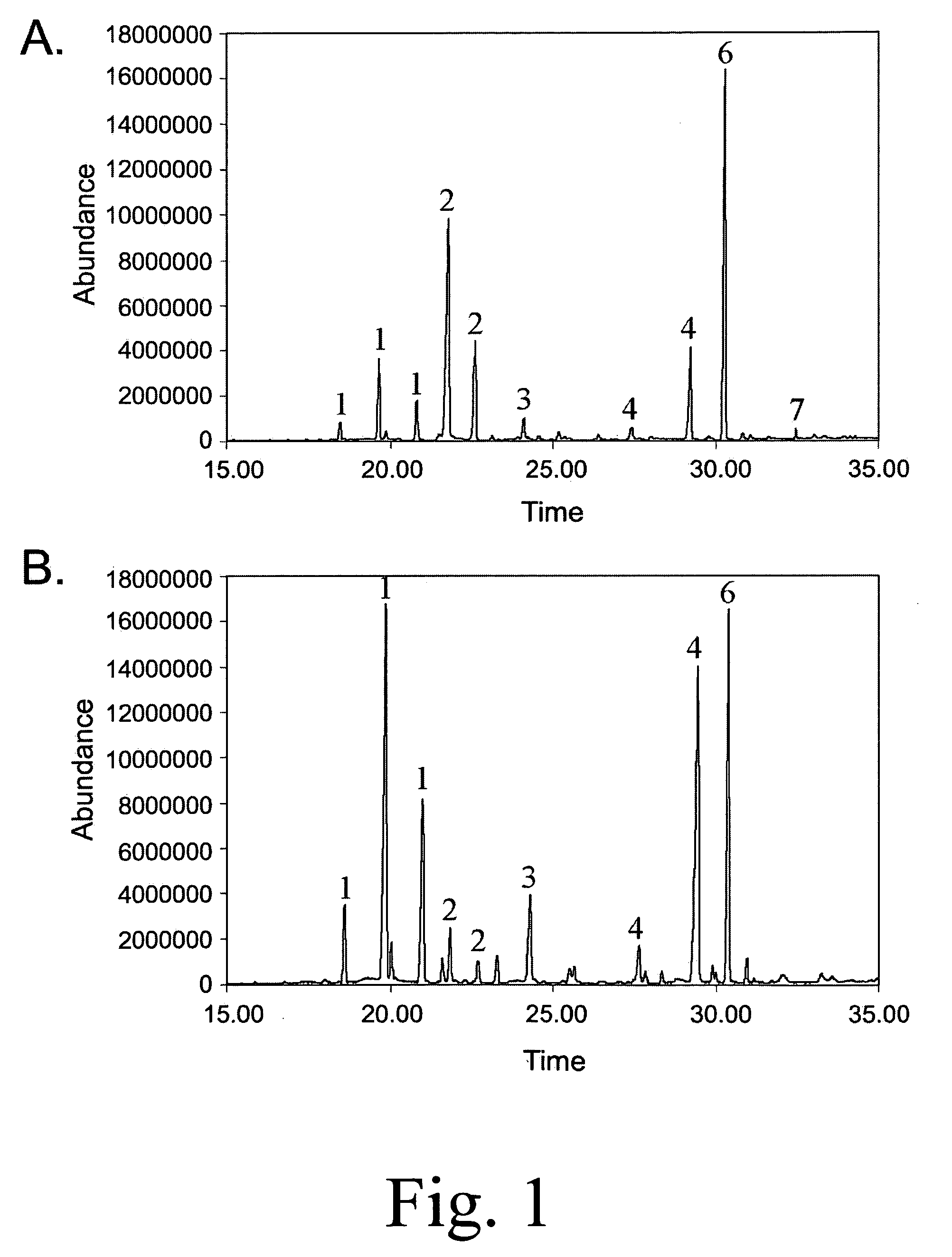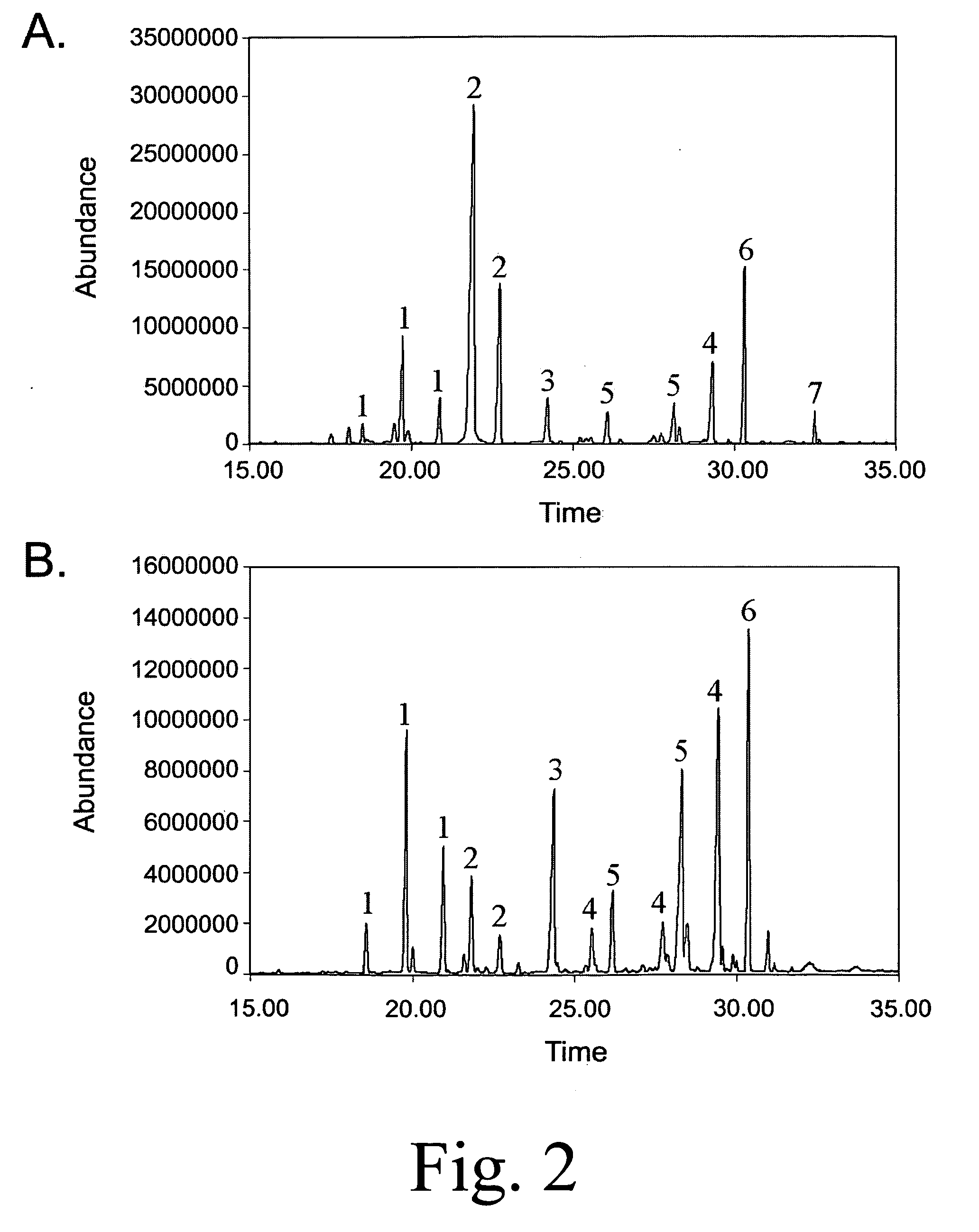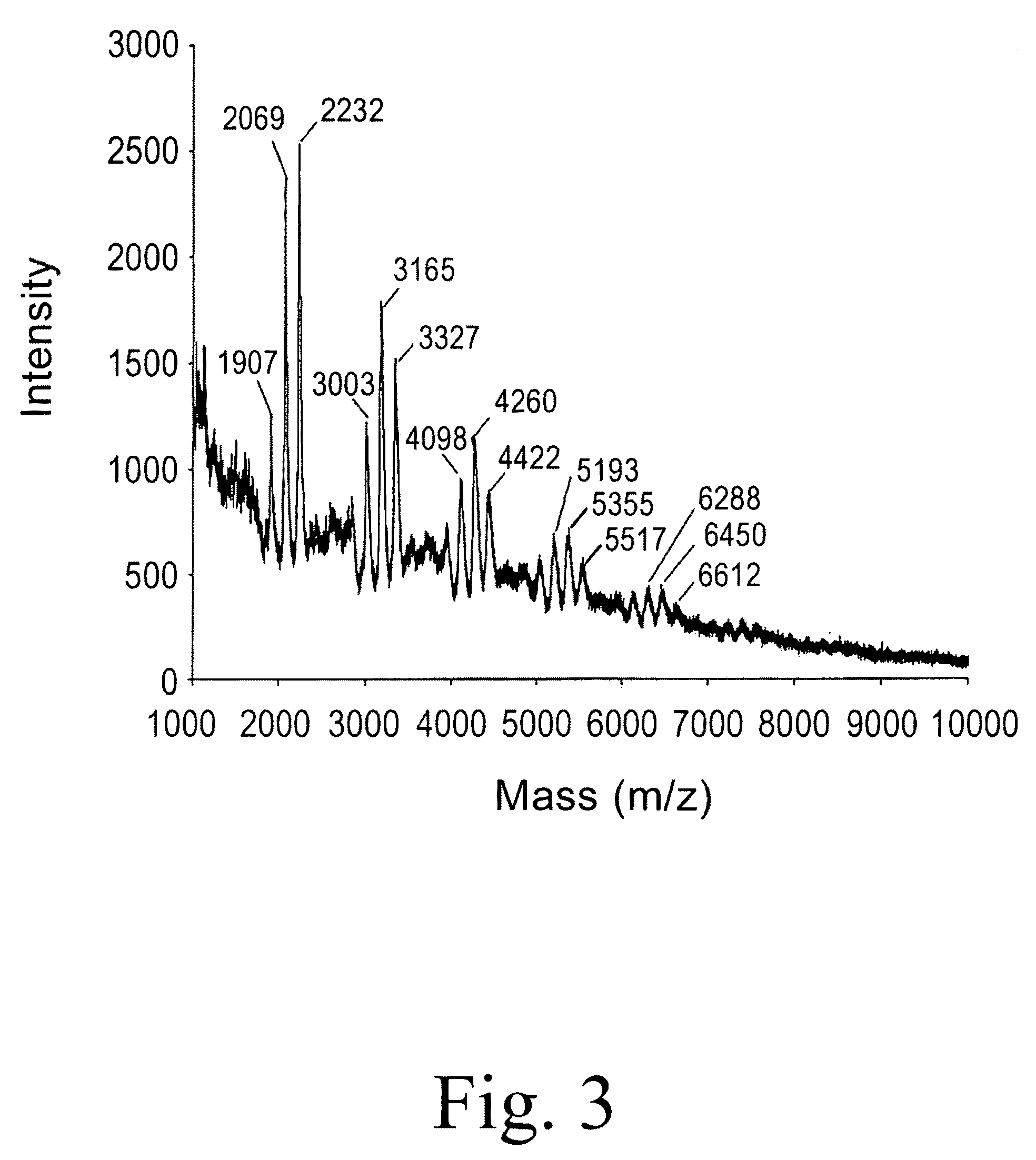Anthrax carbohydrates, synthesis and uses thereof
a technology of anthrax carbohydrates and synthesis, applied in the field of anthrax carbohydrates, synthesis, can solve problems such as the death of the hos
- Summary
- Abstract
- Description
- Claims
- Application Information
AI Technical Summary
Benefits of technology
Problems solved by technology
Method used
Image
Examples
example 1
Cell Wall Carbohydrate Compositions of Strains from the B. cereus Group of Species Correlate with Phylogenetic Relatedness
[0146]The Bacillus cereus group of bacteria is comprised of the closely related species B. cereus, B. anthracis, and B. thuringiensis. Bacillus cereus strains can be potent opportunistic pathogens, while B. thuringiensis is an insect pathogen, and B. anthracis is the causative organism of anthrax. The distribution of B. anthracis spores in the US mail system in 2001 demonstrated their potential as a bioterrorist weapon. Although differentiation amongst B. cereus, B. thuringiensis and B. anthracis in practice is not difficult, the speed and specificity of confirmatory identification of virulent B. anthracis are of great importance in the context of bioterrorism preparedness and emergency response. In particular, there is a need for diagnostic tools based on the immunological response since this response has potential for great clinical sensitivity by virtue of amp...
example 2
The Structure of the Cell Wall Polysaccharide of Bacillus Anthracis is Species Specific
[0176]Bacillus anthracis contains only a few known carbohydrates as part of its vegetative cell wall and spore. In this example the structure of the polysaccharide released from the cell wall of the vegetative cell by aqueous hydrogen fluoride (HF) is described. This HF-released polysaccharide (HF-PS) was isolated and structurally characterized from the Ames, Sterne and Pasteur strains of B. anthracis. The HF-PSs were also isolated from the closely related B. cereus ATCC 10987 strain, and from the B. cereus ATCC 14579 type strain and compared to those of B. anthracis. The structure of the B. anthracis HF-PS was determined by glycosyl composition and linkage analyses, matrix assisted laser desorption time of flight mass spectrometry (MALDI-TOF MS), and one- and two-dimensional nuclear magnetic resonance (NMR) spectroscopy. The HF-PSs from all of the B. anthracis isolates had an identical structure ...
example 3
Synthesis and Antigenic Analysis of the BclA Glycoprotein Oligosaccharide from the Bacillus anthracis Exosporium
[0216]The glycoprotein BclA is an important constituent of the exosporium of B. anthracis. This glycoprotein is substituted with an oligosaccharide composed of a 1,2-linked β-L-rhamnoside substituted with the previously unknown terminal saccharide, 2-O-methyl-4-(3-hydroxy-3-methylbutamido)-4,6-dideoxy-D-glucopyranose, also referred to as anthrose. Anthrose has not been found in spores of B. cereus and B. thuringiensis, making it a potential species-specific marker for B. anthracis. In order to study the antigenicity anthrose, efficient syntheses of an anthrose-containing trisaccharide and a series of structurally related analogs were developed. The analogs lacked either the methyl ether at C-2 or contained modified C-4 amino functionalities of anthrose. The synthetic compounds were equipped with an aminopropyl spacer to facilitate conjugation to the carrier proteins mcKHL ...
PUM
 Login to View More
Login to View More Abstract
Description
Claims
Application Information
 Login to View More
Login to View More - R&D
- Intellectual Property
- Life Sciences
- Materials
- Tech Scout
- Unparalleled Data Quality
- Higher Quality Content
- 60% Fewer Hallucinations
Browse by: Latest US Patents, China's latest patents, Technical Efficacy Thesaurus, Application Domain, Technology Topic, Popular Technical Reports.
© 2025 PatSnap. All rights reserved.Legal|Privacy policy|Modern Slavery Act Transparency Statement|Sitemap|About US| Contact US: help@patsnap.com



